Philips 65OLED+936 Review
Fabulous 4K OLED from Philips


Verdict
The OLED+936 is a fabulous 4K flatscreen with inventive AI image processing, Bowers & Wilkins powered Dolby Atmos, and four-sided Ambilight. It’s a multisensory delight!
Pros
- Superb image quality
- Multi-HDR support (Dolby Vision, HDR10+ Adaptive)
- Two 4K 120fps HDMI inputs
Cons
- Input lag isn’t class-leading
- Expensive
Key Features
- HDR supportFeatures support for Dolby Vision, HDR10, HDR10+ Adaptive, HLG and HGiG
- Filmmaker modeOut of box accuracy with film content
- 5th-Gen P5 Dual Picture EngineLatest version of Philips’ picture engine with AI
Introduction
The OLED+936 is an impressive new premium OLED TV from Philips. Like its predecessor, the OLED+935, it boasts a high-end Bowers & Wilkins sound system, but there are big differences to both its audio performance and image quality. Philips has raised its game – and it was on a pretty lofty perch to begin with.
Two obvious differences between this model and last season’s offering are the panel and the processor. The former is now next-gen glass from LG Display, as used by LG in its Evo G1, while the latter is a fifth-generation P5 dual-engine concoction.
Availability
- UKRRP: £3000
- USAunavailable
- Canadaunavailable
- Australiaunavailable
The OLED+936 comes in three screen sizes: the 48-, 55- and 65- inch models (48OLED+936, 55OLED+936 and 65OLED+936) are priced around £1800, £2100 and £3000 respectively. On review here is the 65-inch model.
Don’t look for a corresponding screen in the North American market. Brand owner TP Vision doesn’t have the licence to sell Philips TVs Stateside.
Design
- Soundbar system integrated into the pedestal
- Four-sided Ambilight
- Premium finish
The OLED+936 looks every inch a top-end TV. With a classy steel frame, micro-bezel and that B&W sound system, with distinctive Bowers & Wilkins Tweeter on Top, the build and materials are top-notch.
Rear connections comprise four HDMIs, two of which are able to accept 4K at 120Hz from a high frame rate source, such as the PS5, Xbox Series X or gaming PC.
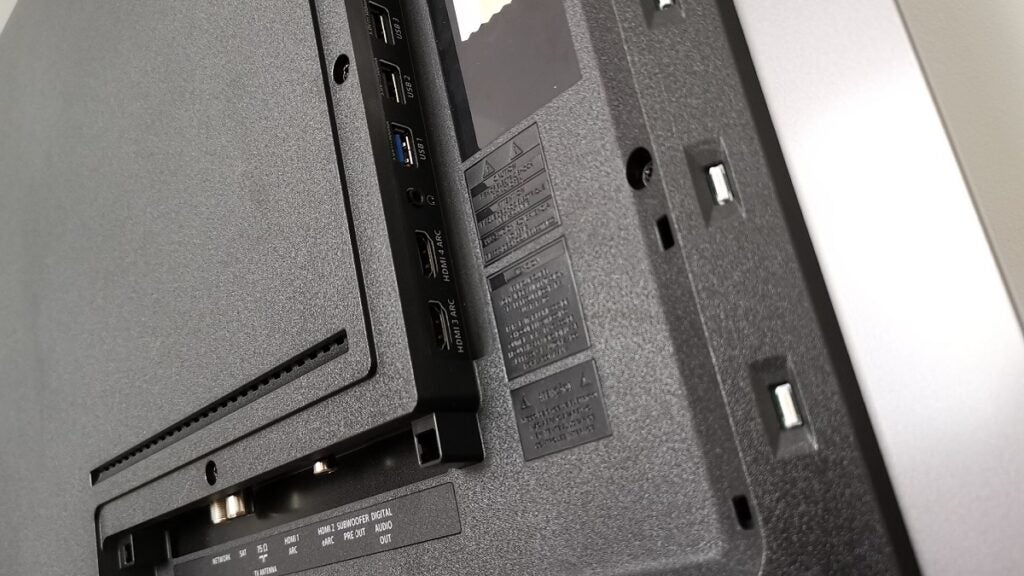
VRR support covers Nvidia G-Sync and AMD FreeSync; there’s also ALLM game mode. All HDMI inputs are ARC compatible, with HDMI 2 eARC enabled (although given the B&W sound system onboard, why would you route to another audio solution?).
The screen features four-sided Ambilight (last year’s equivalent was only three), which can be run dynamically to match content, or as a static backlight. It will also sync with a Hue smart lighting system.
Features
- Android 10
- Freeview Play for catch-up TV and box sets
- Mediocre input lag
Philips remains wedded to the Android smart platform for its high-end OLEDs, and that’s no bad thing. Android 10 is well appointed and stable. As you’d expect, there’s excellent support for streaming services. All the key OTT providers are available, including Netflix, Prime Video, YouTube, Disney+ and Rakuten TV.
The set also offers Freeview Play, which ensures you’re never too far from a catch-up TV player, or free-to-view boxset.
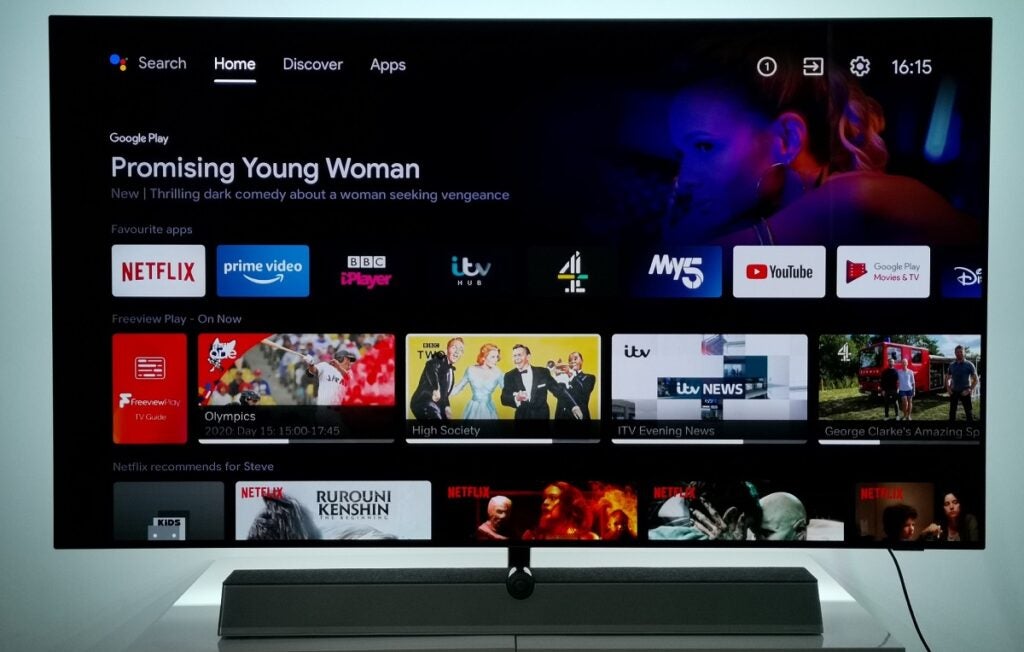
The OLED+936 is also DTS Play-Fi enabled. This means it will work as part of a wider Play-Fi whole-home audio system. Admittedly, Play-Fi doesn’t have much traction outside of the US (where you can’t buy this set), but it does create opportunities if you’re putting together a multi-room system from scratch.
Input lag in Game mode was measured at 21.6ms (1080/60), which is some way behind its main OLED rivals. The (48-inch) Panasonic JZ980 clocks in at 14.6ms (1080/60), while LG’s 48-inch C1 scoots by with 12.6ms (1080/60). This points to a penalty derived from the two-chip P5 architecture.
On the plus side, the latest iteration of Philips anti-screen burn technology constantly scans for static images, selectively dimming offending objects to make screen burn virtually impossible. This is a big plus for console owners.
Performance
- Innovative 5th-gen P5 AI picture engine
- Excellent HDR performance
- Outstanding Bowers & Wilkins audio system
Philips has been bold when it comes to image processing, often favouring enhanced image sharpness and colour vibrancy over the often denuded approach of some rivals. And on the 936, with the enhanced power of its latest P5 picture engine tethered to LG Display’s latest panel technology, this trait is to the fore.
There’s a Perfect Natural Reality circuit, said to extrapolate up to 30% more sharpness from sources. AI-derived sharpness is tricky to pull off without over-cooking the pudding, but the OLED+936 nearly always gets the recipe right.
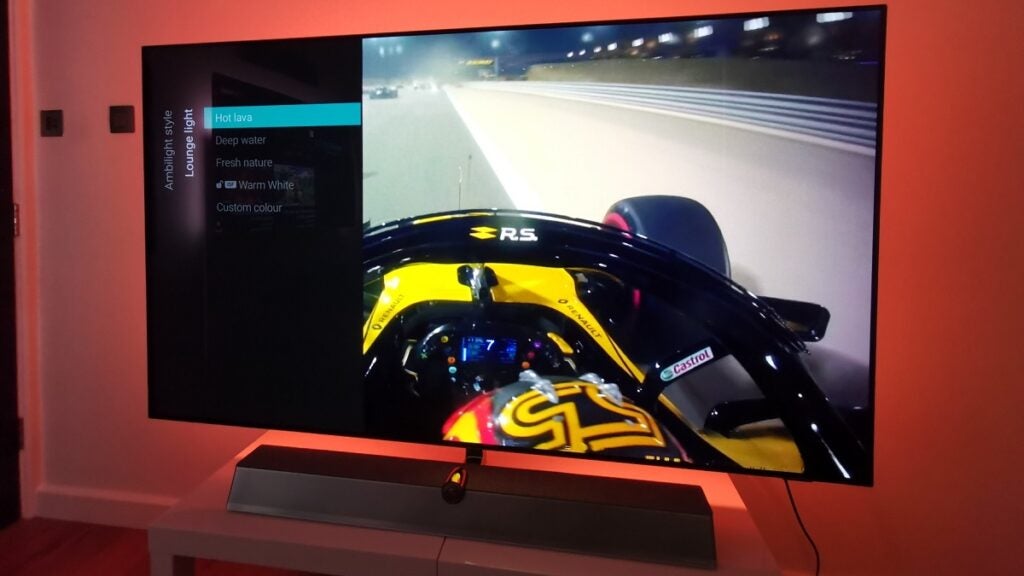
There’s also a new Fast Motion Clarity setting able to better retain detail in sports and other fast-moving content. It’s achieved with 120Hz Black Frame insertion. Brutally effective, but it does cause the image to darken. Our advice is to opt for the minimal setting that doesn’t impose a darkness penalty.
HDR support is comprehensive. Philips continues to be one of the few brands seemingly agnostic to standards. Both Dolby Vision and HDR10+ dynamic metadata are supported, along with HLG, regular HDR10 and game-specific HGiG HDR.
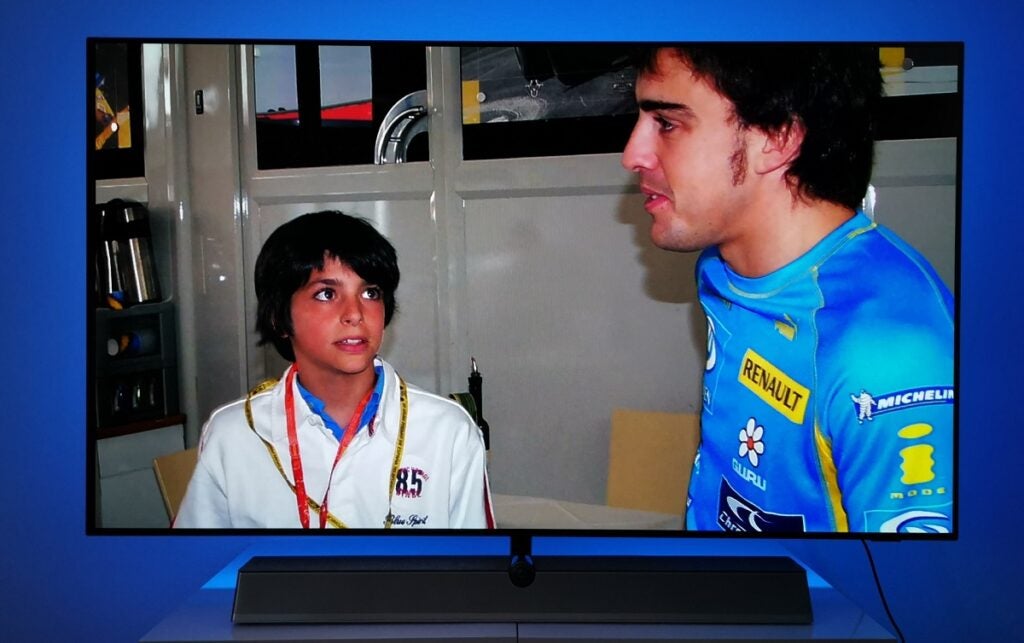
New is Ambient Intelligence, which allows the set to react dynamically to room lighting conditions, making real-time adjustments to contrast algorithms, noise reduction and peak brightness.
There’s no Dolby Vision IQ, but Philips argues that Ambient Intelligence does much the same, and it has a point. This particular AI kicks into action when you select the Dolby Vision Bright mode. Additional Dolby Vision picture modes include Personal, Vivid, Dark and Game.
Similarly, HDR10+ Adaptive also adjusts for ambient light. Brightness and contrast levels are optimised without impacting overall darkness.
A new Film Detection mode switches the set to either Filmmaker mode or an all-new Home Cinema preset (you decide), without having to fiddle around in menus. The latter is actually rather excellent, since it offers high contrast and vibrant colour, but without soapy motion artefacts.
The set’s black level performance, and near-black shadow detail continue to be outstanding. And the contrast is phenomenal; images really pop. Peak HDR brightness was measured just under 950 nits, using a 10% measurement window. This is comparable to the Panasonic JZ2000, and slightly better than the LG G1.
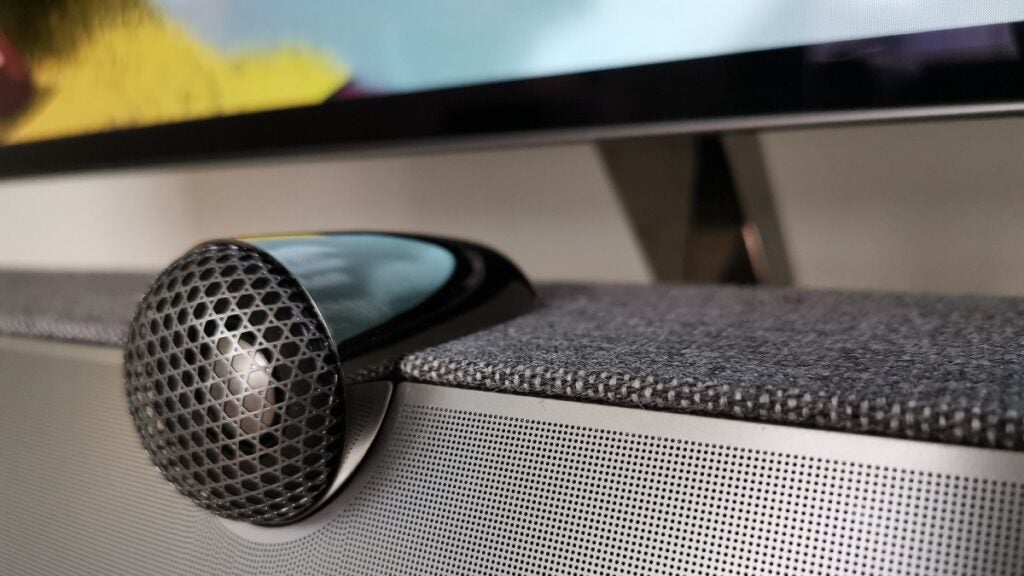
The OLED+936 is also the best-sounding Philips OLED yet. It may still be a 3.1.2 configuration, but Bowers & Wilkins has finally found its TV mojo, upgrading components, altering the elevation of the Atmos drivers, and implementing a stiffer 100 x 65mm cone for the dedicated bass driver.
As a result the soundstage is wider, higher and more engulfing than we’ve experienced from a Philips TV before. That distinctive Tweeter-on-Top ensures greater dialogue clarity, and anchors centre-channel action to the screen. With Dolby Atmos soundtracks, there’s a real sense of objects moving around a soundstage.
It has power, too. A cumulative 70W is available, and there’s no feeling that it will run out of steam at volume.
There are caveats, though. Rear surround sounds are obviously absent, and bass doesn’t drop deep (but it is there!). Our advice is leave it in AI sound mode, and you’ll be more than happy.
Latest deals
Should you buy it?
You want an all-in-one home theatre The Bowers & Wilkins sound system is a fully integrated audio solution that offers wide, cinematic sound, without the need for additional boxes.
You value gaming above regular TV and movie watching The 48-inch OLED+936 will appeal to next-gen gamers, not least because of its 4K 120fps support. However, that dual P5 picture engine weighs down input la
Final Thoughts
Philips has delivered a doozy of a display in the OLED+936. It has co-opted AI image processing to offer some genuinely innovative new features (screen blur protection, Ambient Intelligence), and pushed the envelope when it comes to picture quality. The set also boasts the best integrated audio system yet from Bowers & Wilkins.
How we test
We test every TV we review thoroughly. We use industry standard tests to compare features properly and we use the tablet as our main device over the review period. We’ll always tell you what we find and we never, ever, accept money to review a product.
Used as the main TV for the review period
Tested using industry calibrated tools, discs and with real world use
Tested for more than a week
Tested with broadcast content (HD/SD), video streams and demo discs
FAQs
No you don’t, as it comes with its own attached sound system by Bowers & Wilkins.








